
Ingria is a historical region in what is now northwestern European Russia. It lies along the southeastern shore of the Gulf of Finland, bordered by Lake Ladoga on the Karelian Isthmus in the north and by the River Narva on the border with Estonia in the west. The earliest known indigenous European peoples of the region are the now mostly Eastern Orthodox Izhorians and Votians, as well as the Ingrian Finns who descend from the Lutheran Finnish immigrants who settled in the area in the 17th century, when Finland proper and Ingria were both parts of the Swedish Empire.

Votic, or Votian, is a Finnic language spoken by the Votes of Ingria, belonging to the Finnic branch of the Uralic languages. Votic is spoken only in Krakolye and Luzhitsy, two villages in Kingiseppsky District in Leningrad Oblast, Russia,. In the 2020–2021 Russian census, 21 people claimed to speak Votic natively, which is an increase from 4 in 2010. Arvo Survo also estimated that around 100 people have knowledge of the language to some degree.
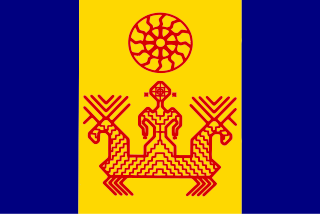
The Izhorians are a Finnic indigenous people native to Ingria. Small numbers can still be found in the western part of Ingria, between the Narva and Neva rivers in northwestern Russia. Although in English oftentimes sharing a common name with the Ingrian Finns, these two groups are distinct from one another.
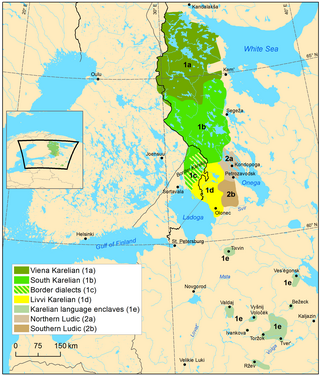
Karelian is a Finnic language spoken mainly in the Russian Republic of Karelia. Linguistically, Karelian is closely related to the Finnish dialects spoken in eastern Finland, and some Finnish linguists have even classified Karelian as a dialect of Finnish, though in the modern day it is widely considered a separate language. Karelian is not to be confused with the Southeastern dialects of Finnish, sometimes referred to as karjalaismurteet in Finland. In the Russian 2020–2021 census, around 9,000 people spoke Karelian natively, but around 14,000 said to be able to speak the language.

Karelia is an area in Northern Europe of historical significance for Russia, Finland, and Sweden. It is currently divided between northwestern Russia and Finland.

The Ingrians, sometimes called Ingrian Finns, are the Finnish population of Ingria, descending from Lutheran Finnish immigrants introduced into the area in the 17th century, when Finland and Ingria were both parts of the Swedish Empire. In the forced deportations before and after World War II, and during the genocide of Ingrian Finns, most of them were relocated to other parts of the Soviet Union, or killed. Today the Ingrian Finns constitute the largest part of the Finnish population of the Russian Federation. According to some records, some 25,000 Ingrian Finns have returned or still reside in the region of Saint Petersburg.

Ingrian, also called Izhorian, is a Finnic language spoken by the Izhorians of Ingria. It has approximately 70 native speakers left, all of whom are elderly.

Greater Finland, was an irredentist and nationalist idea that was a subset of Pan-Finnicism which emphasized the territorial expansion of Finland. The most common concept of Greater Finland saw the country as defined by natural borders encompassing the territories inhabited by Finns and Karelians, ranging from the White Sea to Lake Onega and along the Svir River and Neva River—or, more modestly, the Sestra River—to the Gulf of Finland. Some proponents also included the Torne Valley, Ingria, and Estonia.

The Finnic (Fennic) or Balto-Finniclanguages constitute a branch of the Uralic language family spoken around the Baltic Sea by the Baltic Finnic peoples. There are around 7 million speakers, who live mainly in Finland and Estonia.

The Savonian dialects are forms of the Finnish language spoken in Savonia and other parts of Eastern Finland. Finnish dialects are grouped broadly into Eastern and Western varieties; Savonian dialects are of the Eastern variety.
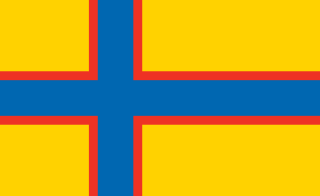
The Republic of North Ingria or Republic of Kirjasalo was a short-lived, small state for the Ingrian Finns in the southern part of the Karelian Isthmus, which seceded from Bolshevist Russia after the October Revolution. Its aim by most proponents was to ultimately be incorporated into the Kingdom of Finland, and it ruled parts of Northern Ingria from 1919 until 1920. With the Peace Treaty of Tartu, it was re-integrated into Russia; however, Ingrian Finns of this area enjoyed a certain degree of national autonomy until the 1930s in compliance with the policy of national delimitation in the Soviet Union. In 1928 the Kuivaisi National District was established there with its administrative base in Toksovo. In 1939 it was abolished and the area was joined to the Pargolovo district. Today, it is the north-eastern part of Vsevolozhsky District.

The Äyrämöiset or, as the Russians call them, Evrimeiset, were a Finnish language-speaking people who lived in the Saint Petersburg Oblast and earlier also on the Finnish part of the Karelian Isthmus. Äyrämöiset were one of the two groups of Ingrian Finns, the Finnish speaking groups in St. Petersburg Oblast, the other being the Savakot. Most of the Äyrämöiset are Lutherans. The name Äyrämöiset (äkrämöiset) comes from the ancient county of Äyräpää (Äkräpää) in the Western part of the Karelian Isthmus - which was a part of the kingdom of Sweden after 1323 AD. In earlier times existed as well an agricultural deity called Äkräs (Ägräs), the god of beans, peas and hemp and the mythological forefather of the Äyrämöiset.
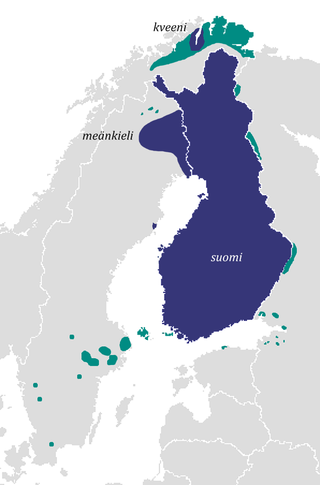
Finnish is a Uralic language of the Finnic branch, spoken by the majority of the population in Finland and by ethnic Finns outside of Finland. Finnish is one of the two official languages of Finland. In Sweden, both Finnish and Meänkieli are official minority languages. The Kven language, which like Meänkieli is mutually intelligible with Finnish, is spoken in the Norwegian county Troms og Finnmark by a minority group of Finnish descent.

The Evangelical Lutheran Church of Ingria is a Lutheran church of the Scandinavian tradition in Russia. It is the second largest Lutheran church in Russia, with 90 congregations and 15,000 members, and is active mostly in Ingria and Karelia.

Deportations of the Ingrian Finns were a series of mass deportations of the Ingrian Finnish population by Soviet authorities. Deportations took place from the late 1920s to the end of World War II. They were part of the genocide of the Ingrian Finns. Approximately over 100 000 Ingrian Finns were deported in the 1930s and 1940s.

Savakot were one of the two main subgroups of Ingrian Finns, the other being the Äyrämöiset. The Savakot descended from Finnish (Savonian) peasants who had migrated to Swedish Ingria from Savonia in Eastern Finland during the 17th century.
Anti-Finnish sentiment is the hostility, prejudice, discrimination or racism directed against Finns, Finland, or Finnish culture.

Ingrian is a nearly extinct Finnic language of Russia. The spoken language remains unstandardised, and as such statements below are about the four known dialects of Ingrian and in particular the two extant dialects.
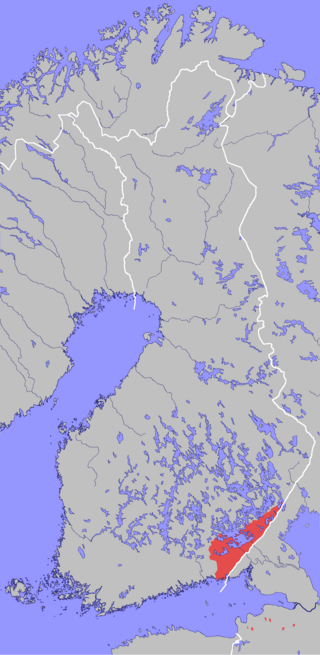
South Karelian dialects, Karelian dialects or Southeast Finnish dialects are Eastern Finnish dialects spoken in South Karelia, along with eastern parts of Kymenlaakso. Prior to the Winter War, the dialects were spoken along the Karelian Isthmus and Ingria. However, the South Karelian dialect speakers from the parts of Karelia taken by the Soviet Union were evacuated into the rest of Finland where their speech was assimilated into the new environment. Use of the Ingrian dialects is declining.
















